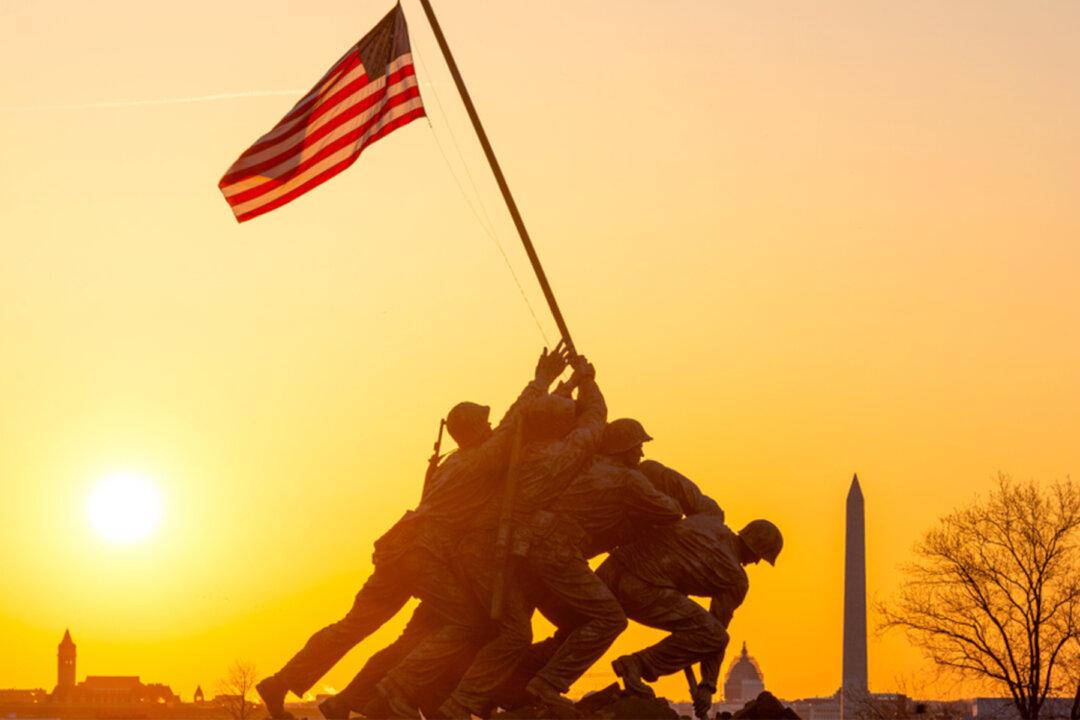A famous black-and-white photograph depicts five American Marines and a Navy medic raising a United States flag at the top of Mount Suribachi on the island of Iwo Jima. The picture was taken on Feb. 23, 1945—75 years ago to the day—nearing the end of a ferocious battle between the Americans and the Japanese. Since then, the photo has become a military icon.
“To get that flag up there, America’s fighting men had to die on that island and other islands and off the shore and in the air,” said Joe Rosenthal, who took the photo, in an interview marking the 10th anniversary of the battle of Iwo Jima. “I took [the picture], but the Marines took Iwo Jima.”





